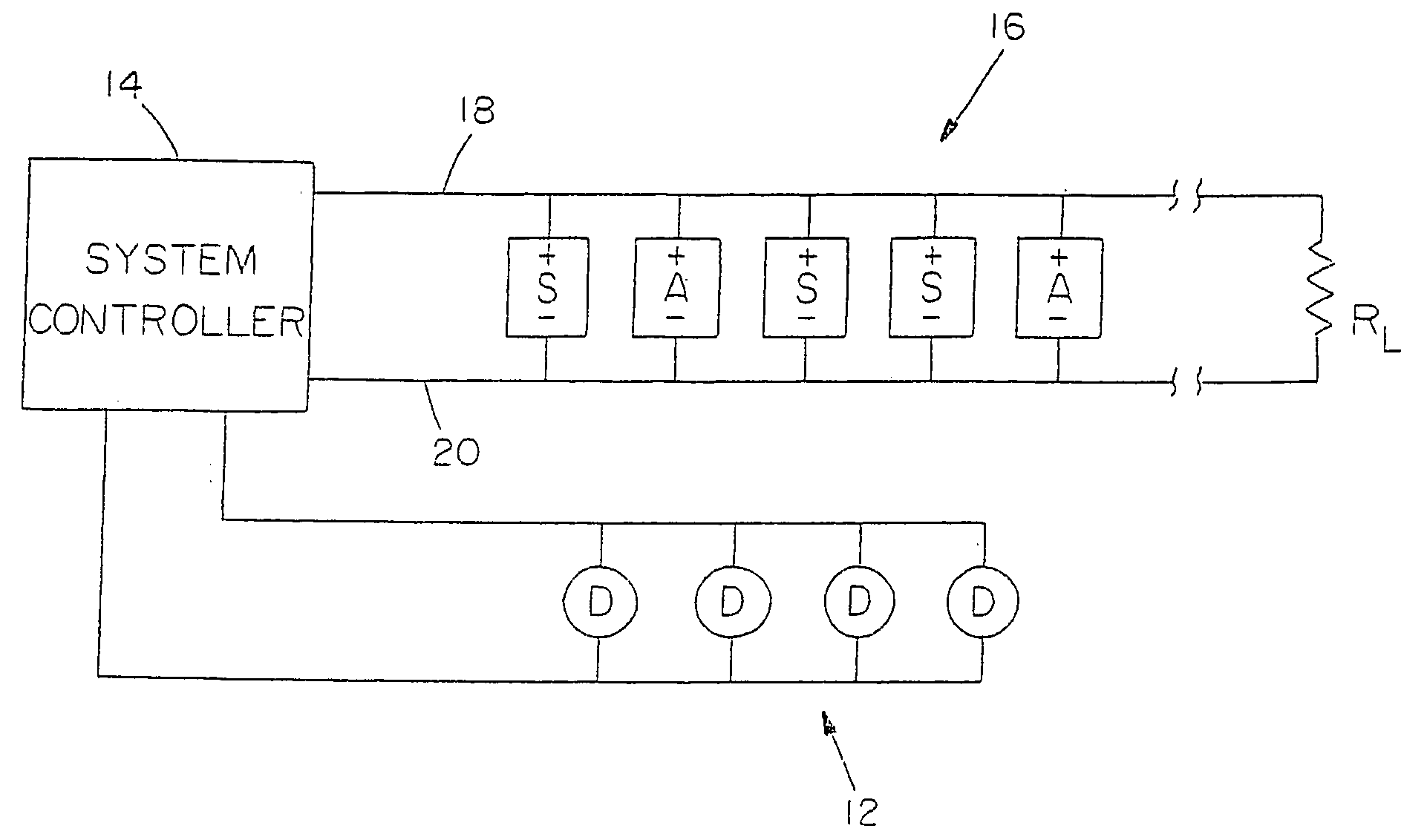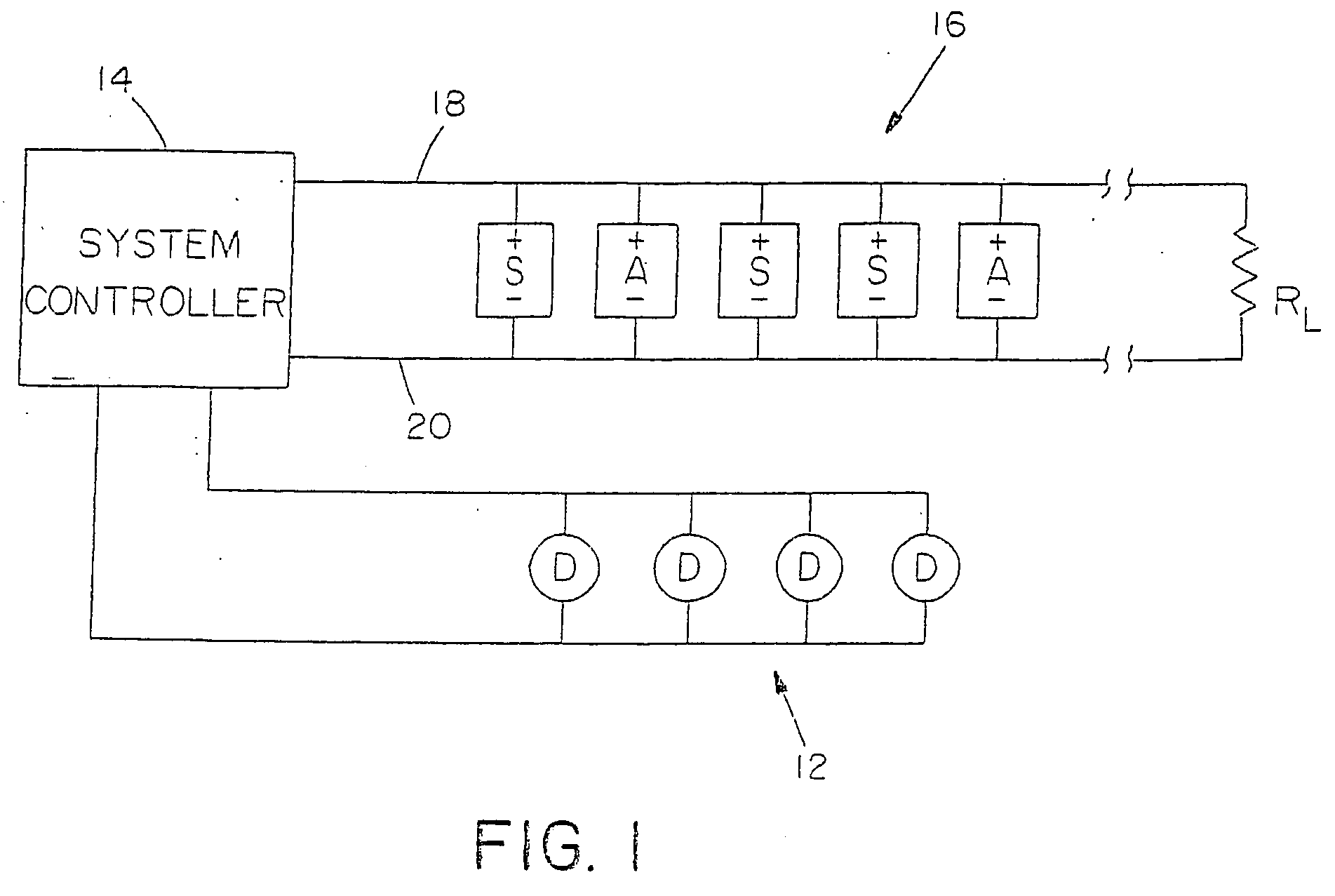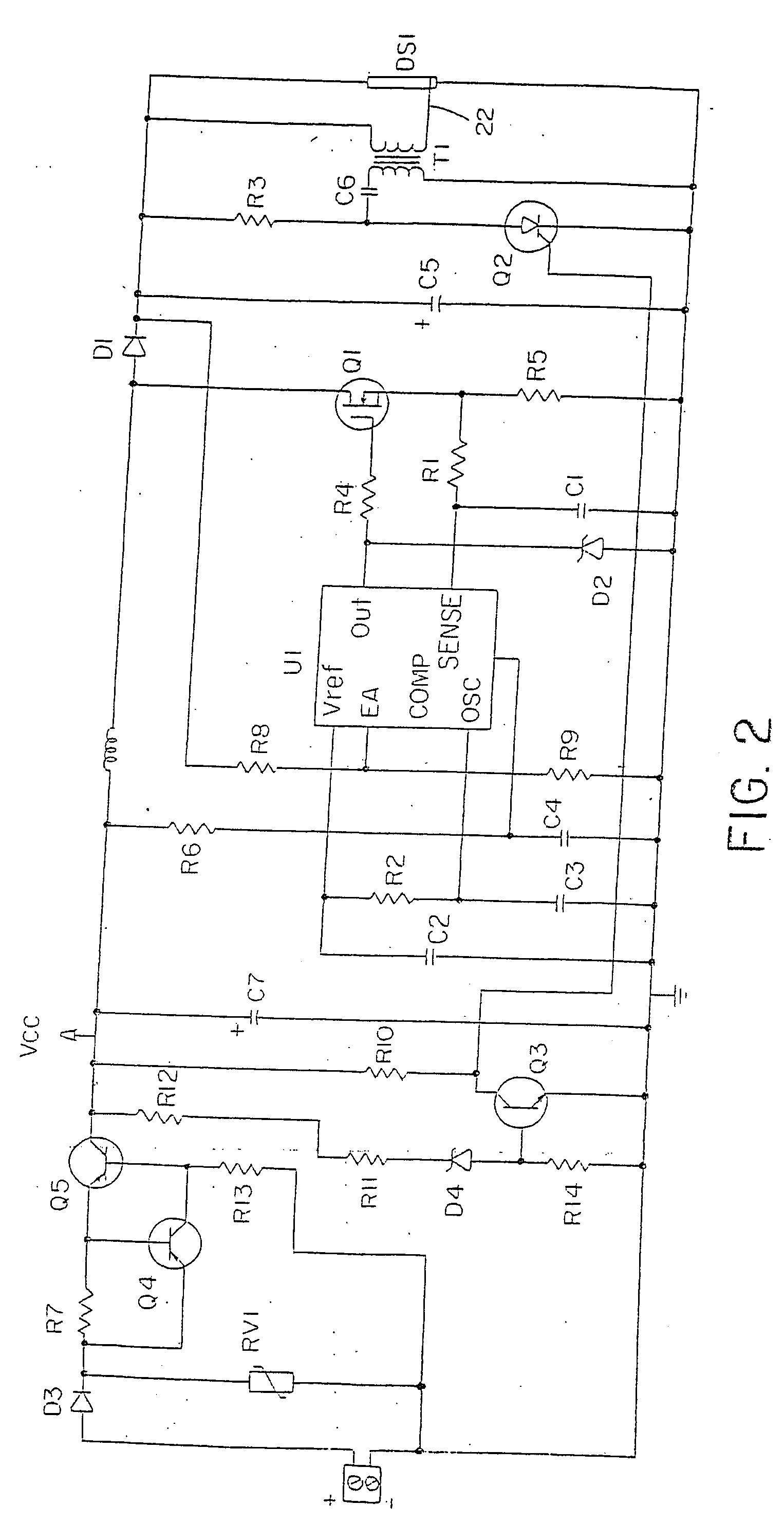Building alarm system with synchronized strobes
a technology of synchronized strobes and alarm systems, applied in the direction of electric transmission signalling systems, visible signalling systems, electric signalling details, etc., can solve problems such as reported epileptic seizures in some people, and achieve the effect of avoiding overcharging of capacitors
- Summary
- Abstract
- Description
- Claims
- Application Information
AI Technical Summary
Benefits of technology
Problems solved by technology
Method used
Image
Examples
Embodiment Construction
[0014] A system embodying the present invention is illustrated in FIG. 1. As in a conventional alarm system, the system includes one or more detector networks 12 having individual fire detectors D which are monitored by a system controller 14. When an alarm condition is sensed, the system controller signals the alarm through at least one network 16 of alarm indicators. The alarm indicators may include any variety of audible alarms A and light strobe alarms S. As shown, all of the alarms are coupled across a pair of power lines 18 and 20, and the lines 18 and 20 are terminated at a resistance RL.
[0015] Each of the alarms A and S includes a rectifier at its input which enables it to be energized with only one supply polarity as indicated. When there is no alarm condition, the network 16 may be monitored by applying a reverse polarity DC voltage across the network. Specifically, line 20 would be positive relative to line 18. Due to the rectifiers within the alarm devices, no alarm wou...
PUM
 Login to View More
Login to View More Abstract
Description
Claims
Application Information
 Login to View More
Login to View More - R&D
- Intellectual Property
- Life Sciences
- Materials
- Tech Scout
- Unparalleled Data Quality
- Higher Quality Content
- 60% Fewer Hallucinations
Browse by: Latest US Patents, China's latest patents, Technical Efficacy Thesaurus, Application Domain, Technology Topic, Popular Technical Reports.
© 2025 PatSnap. All rights reserved.Legal|Privacy policy|Modern Slavery Act Transparency Statement|Sitemap|About US| Contact US: help@patsnap.com



